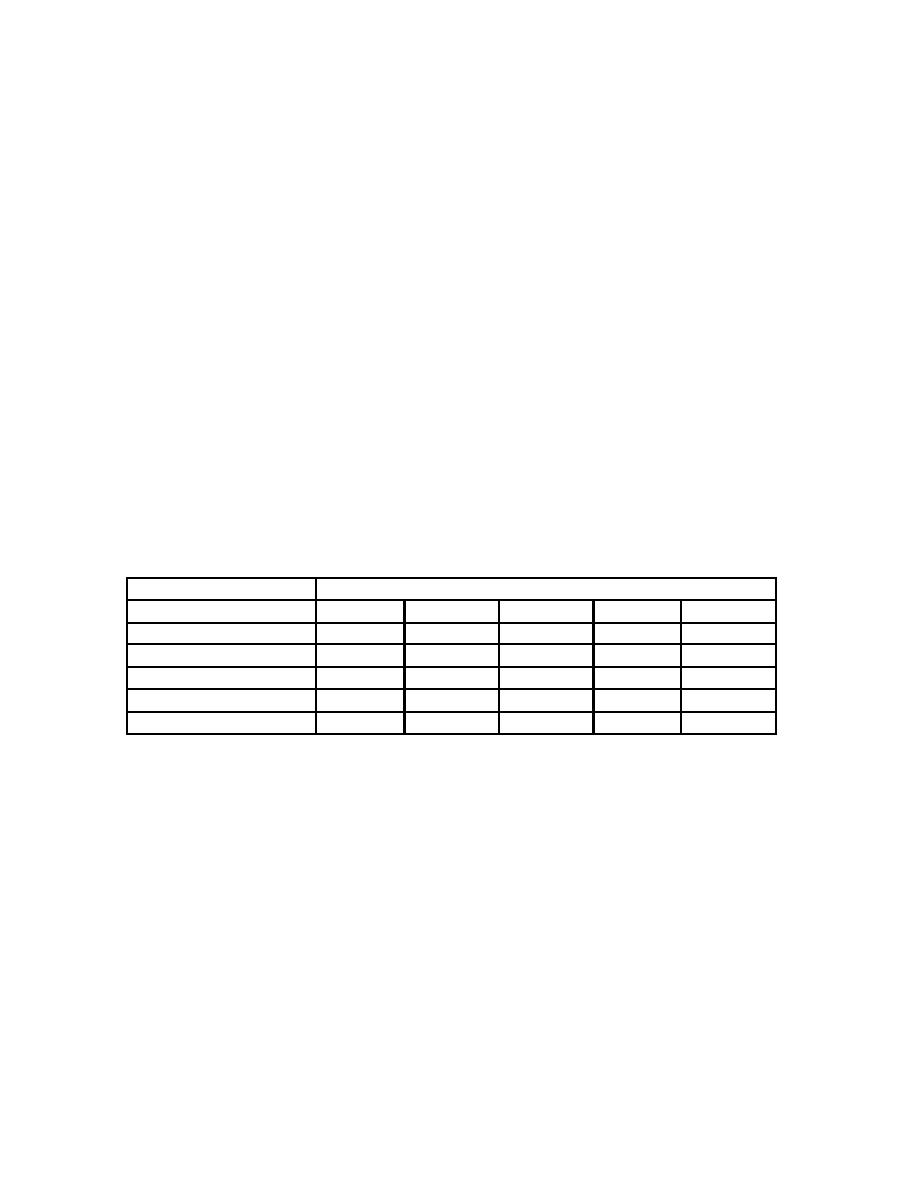 |
|||
|
|
|||
|
Page Title:
Table 5-14. DCFo (Sv/observed Bq), CEDE, for various ITPs and particle sizes |
|
||
| ||||||||||
|
|  DOE-HDBK-1184-2004
be provided by pre-job or in-job contamination surveys. To determine the "actual"
activity on a filter, it would be necessary to dissolve the ITPs. Otherwise, self-
absorption of the beta radiation from tritium leads to underestimates of the airborne
activity. However, many ITPs (especially Type S) are extremely difficult to dissolve,
requiring strong acids for extended periods of time. CEDE DCFs for ITPs of Type
S, when determined based on "actual" activity, are found to be highly dependent
upon particle size. Table 5-13 data indicate that variations can be as much as a
factor of 30 for particle sizes from 0.5 to 10 m AMAD (for a given material).
Fortunately, it is not necessary to rely on "actual" activity or to dissolve ITPs prior to
counting samples. Not only is dissolution cumbersome, but "observed" activity on
filters counted by LSC without dissolution is a much better indicator of dose or dose
potential than is "actual" activity. The reason for this is that (due to self-absorption)
only the beta radiation that escapes ITPs is capable of causing lung dose and, if the
ITPs are not dissolved prior to counting, only the beta radiation that escapes is
counted.
Table 5-14 shows CEDE DCFs in terms of Sv per "observed" Bq when undissolved
ITPs are counted via LSC. The values in the table were calculated by dividing the
CEDE DCFs in Table 5-13 by the corresponding SAFs from Table 5-10. The term
"DCFo" is used to represent DCFs that are based on "observed" activity, as
determined by LSC counting without dissolution.
Table 5-14. DCFo (Sv/observed Bq), CEDE, for various ITPs and particle sizes
(AMAD, s g = 2.5), Type S assumed
CEDE DCFo vs. Particle Size [AMAD (m), s g = 2.5]
Base Material*
10
5
2
1
0.5
1.14x10- 10 1.92x10- 10 2.75x10- 10 2.67x10- 10 2.35x10- 10
Organic [∼(CH2)n]
1.39x10- 10 2.19x10- 10 3.04x10- 10 3.12x10- 10 3.29x10- 10
Rust [∼FeO(OH)]
1.42x10- 10 2.24x10- 10 3.11x10- 10 3.27x10- 10 3.62x10- 10
Ti H2
1.64x10- 10 2.42x10- 10 3.30x10- 10 3.66x10- 10 4.44x10- 10
Zr H2
1.97x10- 10 2.61x10- 10 3.55x10- 10 4.29x10- 10 5.61x10- 10
Hf H2
* Variable amount s of elemental hydrogen are isotopically tritium.
Table 5-14 data indicate that the CEDE DCFos, based on "observed" activity of
ITPs of Type S, are less dependent on particle size than are the CEDE DCFs,
based on "actual" activity, from Table 5-13. The assumption of a single particle size
distribution would result in much smaller errors than noted above; for example,
when using "observed" activity, CEDE DCFs vary only by a factor of about 5 for
particles ranging in sizes from 0.5 to 10 m AMAD. Compare this with a factor of
25 when using "actual" activity.
The 10 CFR Part 835 recommended default particle size for occupational exposure
is 1 m AMAD (s g = 2.5). From Table 5-14, the most conservative CEDE DCFo for
1 m AMAD is about 4.3 10- 10 Sv per observed Bq (1.6 103 rem/Cio). This is the
value that should be used to compute CEDE assessments for inhalation intakes of
tritiated particulates, based on air monitoring and observed results from that
monitoring.
43
|
|
Privacy Statement - Press Release - Copyright Information. - Contact Us |